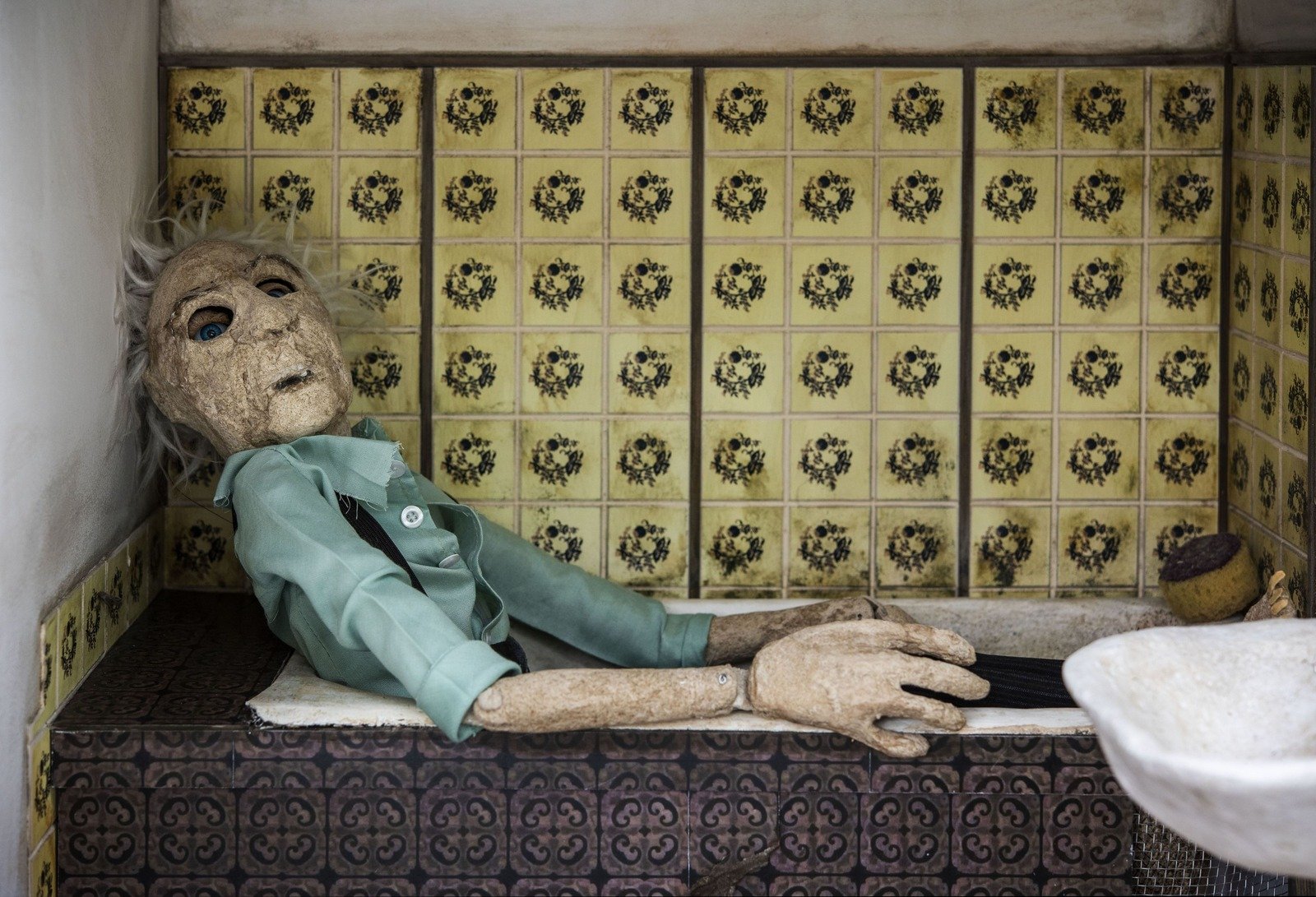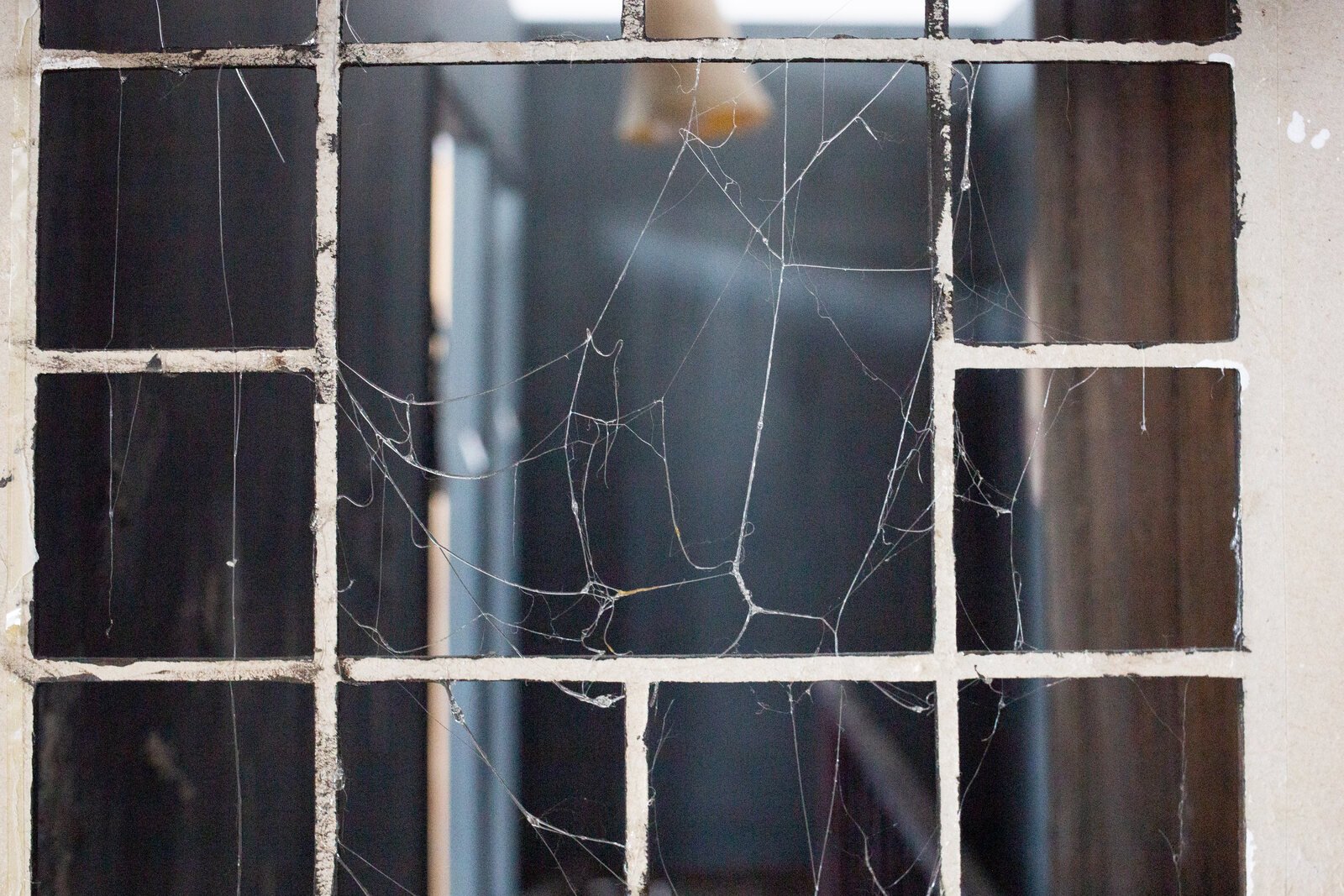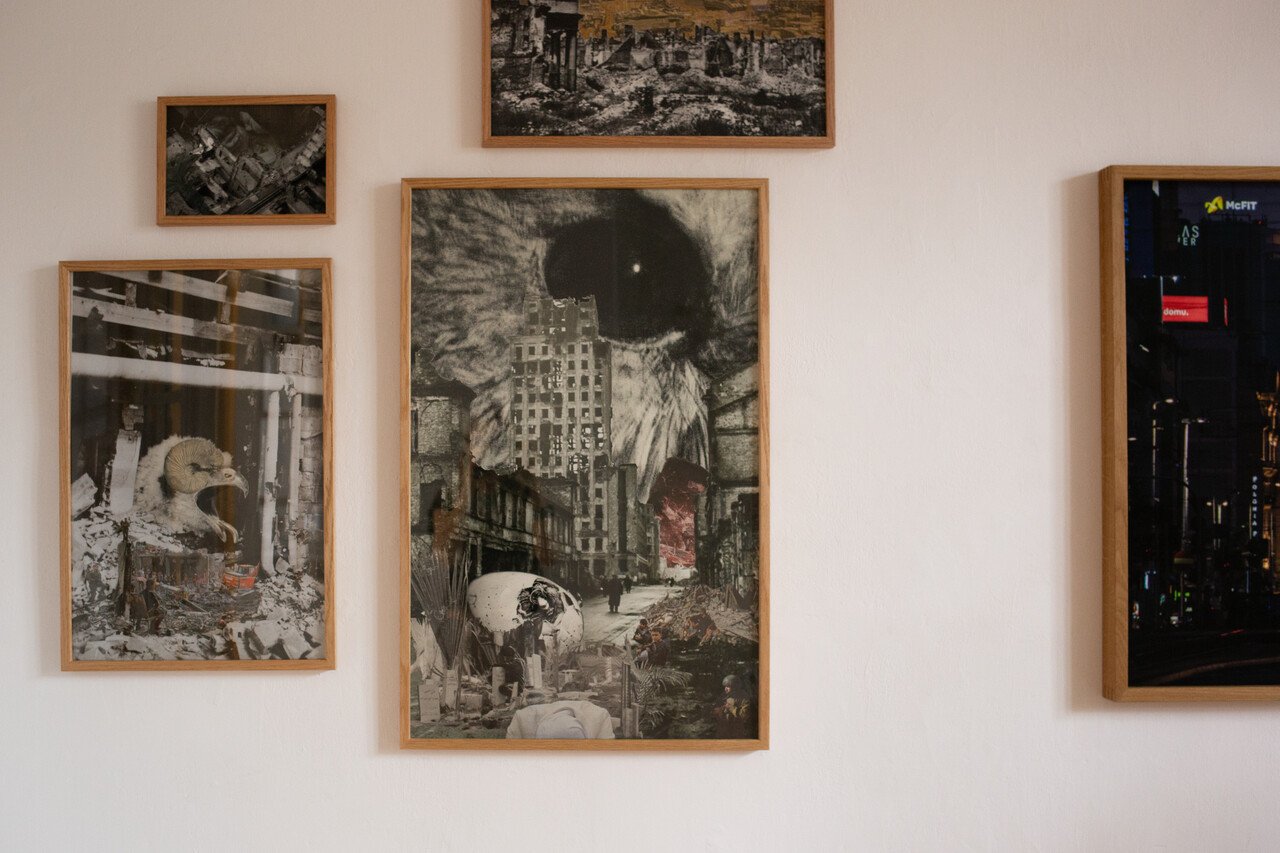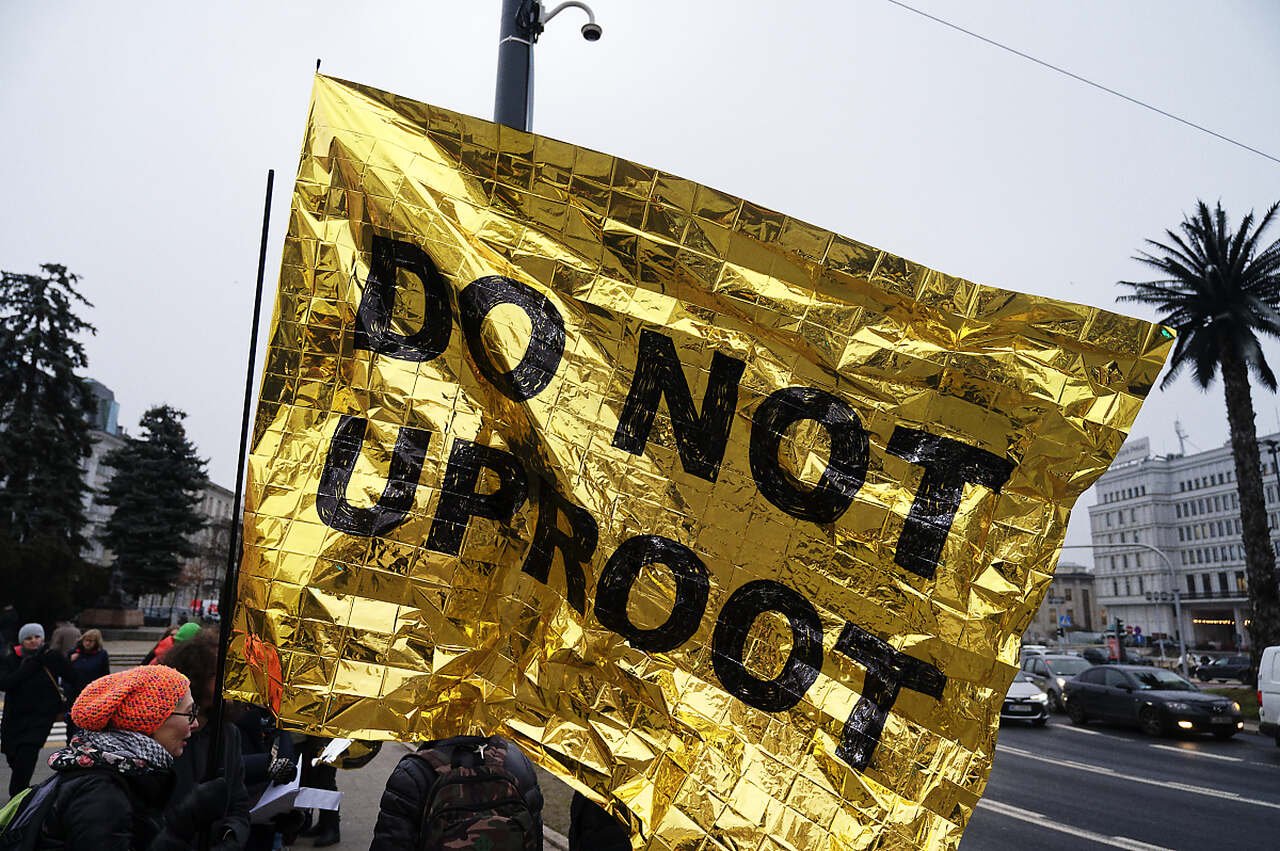Viktor Witkowski
When I attended FRINGE Warszawa and Warsaw Gallery Weekend at the end of September, I told myself to remain open and to avoid making any premature decisions about what I might review if any of my pitches were accepted. The last time I had been to Warsaw was the previous September, right before the general elections that ousted the far-right government under the eight-year-long leadership of PiS.[1] This time, the mood during FRINGE/WGW was lifted, celebratory, even jubilant – and it showed in most of the work on display across the artist-run spaces, pop-up locations, commercial galleries, and institutions. The improved mood was hard-earned too. Cultural workers, their spaces and institutions had been under constant pressure to function and resist while the former government was cutting arts funding, dedicating its resources to a culture war and appointing loyalists to influential governmental and cultural positions.
On the second day of FRINGE/WGW, I walked into gallery lokal_30, which is tucked away on the upper floor of a former residential building that is now mixed-use. A leaflet by the entrance announced the exhibition Night Herons by Joanna Rajkowska (curated by gallery director Agnieszka Rayzacher). I folded the gallery text in half and turned into the space on the left. To my surprise, I was confronted with a long row of neatly installed papier-mâché marionettes with human bodies and animal skulls in place of heads.





All of the sculptures were cradling their respective heads, as if unwilling to part with them. Their sense of animation and psychological impact became even more palpable upon closer inspection. The bright blue eyes of one of the characters were piercing and introspective. I waited for him to take a breath. Unlike the other marionettes, this particular character’s face revealed the passage of time: the paper’s rough edges emulated weathered skin, wrinkles, and furry eyebrows. White hair sprouted from the top of his head and the lack of well-defined ears looked just right. His and the other figures’ diminutive size was barely noticeable. What they lacked in human scale they made up through their amplified presence.
Next to the line of figures was a table with tools that had been created at their same scale. A bloodied, disembodied hand placed on the table added to my increasing bewilderment. It was holding one single bullet which sat atop additional brass casings that were strewn around a blue bowl. Having spent the previous two days looking at what felt like hundreds of feet of wall space covered in paintings, countless sculptures and arrangements on floors, ceramics, analog and digital screens – nothing had prepared me for seeing these representational objects, at such a scale, arranged in a way that wasn’t arbitrary or trying too hard to convey narrative significance. This experience was more like tracing individual clues – vignettes – of a yet unknown whole.
On the adjacent wall of the same room, several framed photographs depicted pastoral scenes with some haunting undertones. In them, the marionettes which welcome us at the beginning of the exhibition, were placed in natural settings, interacting with animals. The cinematographic quality of the photographs made me hopeful that these could be film stills and that perhaps we would be given the opportunity to witness them come to life.




The next room in the gallery contained several miniature dwellings painstakingly constructed from materials like wood, cardboard, and paper, painted with acrylics, even featuring a functional lamp as in the case of Attic. One interior caught my attention when I spotted the Star of David inlaid in its hand-painted windows. A black booklet with what appeared to be photographs was left on top of a pile of white paper. The low-hanging light above the wooden table suggested a study room – maybe within a synagogue? Out of the corner of my eye, I noticed people walking in and out of an entry covered by a black curtain. Without reading the wall label I decided to follow them into what I thought was the last room of the exhibition.
I was lucky to secure a seat and to sit down in the completely dark space the moment the film started. The opening introduced an epigraph by Spinoza: “All bodies agree in certain things (and further: All bodies agree in the fact, that they involve the conception of one and the same attribute.).” What came next was a story that followed several characters from two families over more than a century. The first scene marked the flight of two people in the early 1900s. No exact place or motif is provided, but the steady voiceover (by Matthew Daniel and Robert Yerachmiel Sniderman) that continues throughout the entire film implies pogroms and a home left behind. Fast-forward to Poland of the early 1940s: the narrator introduces two individuals who managed to jump off a train destined for Auschwitz. The word “Holocaust” is not mentioned, and no further factual details regarding the plight of Jews are shared throughout the film.




We are invited into a world that consists not of one main narrative or event, but multiple paths that focus on exploring the inner lives of its protagonists. The camera (by Leszek Molski) and each marionette (by Rajkowska) are guided masterfully. Both move through their natural and built environments as if they truly belong to and inhabit these places. Spinoza’s epigraph and his still controversial argument that God is not to be understood as a supernatural deity, but as an expression of Nature and all beings contained in it (including human and non-human beings), is not just a hollow flourish. It is a belief that sets the tone of the film, that sharpens our eyes and senses while animating and infusing its characters with this belief.
The story, written in collaboration with Ashkenazi American artist and poet Robert Yearchmiel Sniderman, draws from the personal lives and experiences of Sniderman and Rajkowska’s respective families. It weaves the past and present into a mesh of lives lived and spent. Animals and people are hunted, their wounds are dressed, and traumas are not just carried within but also across time and continents. Violence experienced by human and non-human bodies is enacted and passed on to others. One moment we find ourselves in a synagogue in an undisclosed city in the US, then in an attic above a storefront, just to return to the Polish swamps, and back again into the worn bathroom in which a final bath is given to one of the main characters. When the night herons appear (according to Slavic mythology, to escort the dead to the afterlife), they are framed as subjects who observe and are in communication with their human counterparts. Some outdoor scenes appear to have been filmed during the golden hour, illuminating the characters and their world with a hallucinatory tint. Sound, music (Ola Kozioł, Andrew Dixon, and Suavas Lewy of Mutant Goat), ritual and dance take hold of the viewer and make this film a work that has to be experienced in person, and in relation to the objects and artifacts from the film.


I did not get up from my seat for the full 37 minutes of the film. Rarely have I found myself so immersed without being talked into putting on a VR headset. It would take me a few more weeks to slowly process what I had witnessed, and to acknowledge that trying to describe and explain the particularities of the film’s narrative to this readership, the relationships between the individuals and their artist counterparts – Rajkowska and Sniderman – would not do it justice and would only explain away the many wonders this film contains. Only later, during my research for this exhibition, did I find out that Rajkowska originally planned to shoot the film with actual people in Austria. Because of the onset of the pandemic her plans were scrapped, and marionettes which she made together with Lili Bargłowska, Basia Ciacek, Andrew Dixon, and Viktoriia Tofan replaced their human actors, and the filming location changed to Nowogród, Poland. Rajkowska’s choice to create marionettes that stand in for humans and animals has the effect that as viewers, we sink easier into a world in which all living things are connected and quite literally made of the same fabric.
On my way back through the gallery as I was about to leave, I saw that I had missed one more exhibition space. I entered the room and noticed an arrangement of different-sized photo collages. A quick look at the wall label identified the series as Birds in Gaza, which included several other works titled Five Corners Square – a popular intersection in the commercial center of Warsaw. I walked up to one collage titled Birds in Gaza II from 2024.
The original image depicts the Jabaliya refugee camp in Khan Younis, Gaza, after the Israeli air force leveled several residential apartment buildings in November 2023. Parts of the collage have been digitally colorized by Rajkowska, which helps to emphasize the archival image inserted at its center: a black and white photograph of people taken among Warsaw’s ruins at the end of WWII, after the city had been destroyed not once, but twice: during the Warsaw Ghetto Uprising in 1943 and then the Warsaw Uprising in 1944.

Rajkowska employs the same technique in the remaining photo collages, at times changing details like transposing traditional Palestinian dresses on top of a destroyed Warsaw cityscape to point to the violent absence of their civilian bearers. In Birds in Gaza IV British troops appear in the lower right corner herding a small group of people through a narrow set of wooden fences. In 1947, about 100,000 British troops were stationed in Palestine until May of 1948 when Israel declared its independence, followed by the 1948 Nakba – the ethnic cleansing of Palestinian Arabs. The night herons are bearing witness in each of the collages. They are also a reminder of their role as harbingers of death and therefore portals between past and present, the living and the dead, our ancestors and descendants.
When I turned around (and away from the collages), I noticed the only painting in the exhibition. According to the gallery text, written by Rayzacher, this triptych is based on a phone recording by an IDF soldier who witnessed the destruction of Shuja’iyya – the southern quarter of the Old City of Gaza. This clip was brought in as evidence to the International Court of Justicein which South Africa accused Israel of genocide. The painted phrases in the first and second panel state “Here the victory begins.” and “Long live Israel.” They are transcriptions of the words spoken by the Israeli soldier who recorded the destruction. A victory built on top of mass civilian death is a victory only doomed empires can embrace. Arranged in a sequence and again speaking to the passage of time, the three canvases reflect the themes staked out by Rajkowska and Sniderman. In this triptych, the exhibition finds a violent, poetic conclusion. But “conclusion” does not mean closure. In Joanna Rajkowska’s own words about this exhibition, she states:
“This film had to be shown in the context of works on the genocide in Gaza. It seems to me that without this post scriptum, showing Night Herons with its threads related to the Holocaust, pogroms and hunting for people would now be impossible.”




Afterword
When I got up after the screening of Night Herons and was about to leave the gallery only to discover that there was one more room left in the exhibition, my observations that I describe in sequence above happened almost at once. I cannot adequately describe how deeply I was shook when I realized how Rajkowska and Sniderman have been able to express – by guiding us through sound, images, words, objects, subjects, experiences, memories, human-animal violence, exteriors, interiors – what so many in the art world since the Hamas massacre of October 7th, 2023 followed by Israel’s genocidal campaign, have not been able to.
Collapsing images of Warsaw’s destruction (and the implied Warsaw Ghetto Uprising) with Gaza’s, immediately brings to mind Masha Gessen’s comparison of WWII-era Jewish ghettos to the conditions experienced by hundreds of thousands of Palestinian’s in besieged Gaza. The true scandal here in Germany, where I write from, is that people (mostly in the German press and its spheres of culture and politics) and institutions have accused Gessen and artists like Candize Breitz and Nan Goldin – all of whom are Jewish – of implicit antisemitism, and hold a skewed sense of historical responsibility towards the state of Israel, often evoking Israel’s right of self-defense to justify the IDF’s onslaught in Gaza. In response to the 2018-19 Gaza border protest (known as The Great March of Return) and the ensuing massacre that saw over two hundred Palestinians killed and several thousand wounded, Robert Yerachmiel Sniderman walked 16 miles across Berlin. He tied an exhaust pipe to his abdomen, painted the words GAZA in Latin, Hebrew, and Arabic letters on his back, and carried in one hand, 13 stones that he had collected in the streets of Warsaw, the birthplace of his great-grandmother. For a January 2024 interview with The Left Berlin, Sniderman stated:
“I think I enacted this piece, the first of three such walks, as a warning – but to Europeans who live in the ruins of anti-Jewish genocide, and to myself. Like the walkers in the Great March of Return, I was trying to draw and walk my own line – a line that says what is happening in Palestine/Israel is not merely another instantiation of oppression that all nation-states integrally manifest, but part of a specific and specifically unresolved logic of annihilation. Europe depends upon the State of Israel as restitution. And it was not restitution. It was, and remains, a perpetuation of our persecution; a mere gift of the weapon.”
In Night Herons, Rajkowska, Sniderman, and Rayzacher have created a path that does not resolve the problems at hand, but it is a path nevertheless that each of us can walk to experience a truth so beautiful, so powerful, and almost too simple to accept: the equality of all beings in life and death.
On December 14th, 2023, Joanna Rajkowska and Robert Yerachmiel Sniderman staged a performance at Rajkowska’s work Greetings from Jerusalem. Her 2002 work consists of a faux palm tree that was “planted” in the center of Warsaw along the main east-west street which bears the name “Jerusalem Avenue” (a photograph depicting the palm tree is at the center of the Birds of Gaza photo collages in the second part of the Night Herons exhibition). At the end of the eighteenth century, this road led to a small Jewish settlement called New Jerusalem. Eventually the settlement was razed and its Jewish population driven out while the street name remained. After Rajkowska’s visit to Jerusalem in early 2001, she decided to acknowledge the bond between Warsaw’s Jewish past, its communities’ centuries-long uprooting, persecution, and mass-murder, by planting a palm tree on Jerusalem Avenue. The palm tree was manufactured by a company in Las Vegas, shipped to Warsaw, and installed on-site. Over the years it has been exposed to natural, societal, and political forces, which have shaped and reshaped the tree’s function, role, and meaning (for in-depth documentation of Greetings from Jerusalem follow this link to the artist’s page).
On December 14, 2023, Rajkowska and Sniderman staged DO NOT UPROOT, a performance which took place in opposition to Israel’s unrelenting military response following the October 7th Hamas massacre. Sniderman minces no words in his text about their performance and echoes a thought similar to his earlier quote included above. He writes:
“We stand in solidarity with the Palestinian people being severed from their lives, rights, families, and earth. We say to the Israeli regime and its accomplices: Do not uproot! End the genocide! (…)
In the same act, the palm points to the contemporary conditions of life and death in Palestine/Israel, an extension and outsourcing of the festering wounds in Europe. The nation-state’s fundamental premise of depopulation, suicidal militarism, and racist borders must end! We scream with the survivors and families of the victims of the October 7th massacre:
“In my name, I want no vengeance” – Michal Halev
“We must break the cycle” – Maoz Inon.”
One of the reasons why the exhibition Night Herons has such a powerful and utterly devastating impact is due to Sniderman’s argument that the current conditions and the violence that we are seeing in Israel and Palestine are “an extension and outsourcing of the festering wounds in Europe.” According to Sniderman (to use part of his earlier quote) “Europe depends upon the State of Israel as restitution.” Night Herons is the first and only exhibition that I am aware of that makes this connection visible and comprehensible: what happens in Gaza has its roots in the annihilation of Jews in Central Europe. That is precisely why it matters to have Night Herons carried out by a Pole and an Ashkenazi American. Neither artist claims that art can solve our contemporary political conditions. Rajkowska and Sniderman use their roots, experiences, histories, and generational traumas to express an artistic vision that is not divisive and does not seek vengeance. Night Herons is a deeply compassionate exhibition without any didactic undertones that communicate or manipulate how the work should be viewed and understood. The exhibition is a successful attempt to connect the past and the present without reducing or instrumentalizing either Jewish or Palestinian suffering. Antisemitism exists alongside anti-Palestinian and anti-Arab sentiment. Israel’s actions against Palestinians are unjust, genocidal, and echo the injustices that European Jews experienced in their past. All of these things can be true at the same time because they belong to and stem from connected worlds of suffering. Rajkowska and Sniderman demonstrate that the “unresolved cycle of annihilation” is a reality. And once we recognize that reality and allow ourselves to see Poles, Israelis, and Palestinians in this light, then we might be on the path to break the cycle of violence, to separate the violators from the violated, and become clear-eyed about who needs our solidarity at this volatile moment in history.
Do not uproot.



[1] Prawo i Sprawiedliwość, “Law and Justice”
Artist: Joanna Rajkowska (with Robert Yerachmiel Sniderman)
Exhibition Title: Night Herons
Curated by: Agnieszka Rayzacher
Venue: lokal_30
Place (Country/Location): Warsaw, Poland
Dates: 26.09. – 30.11.2024
Photos by: Exhibition documentation by Matylda Uszyńska

